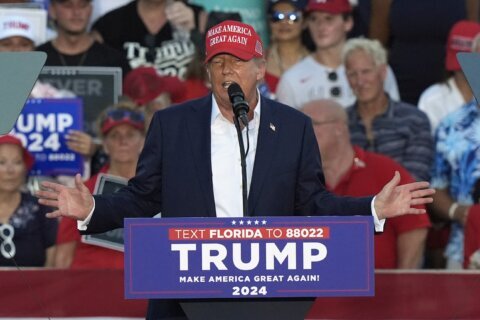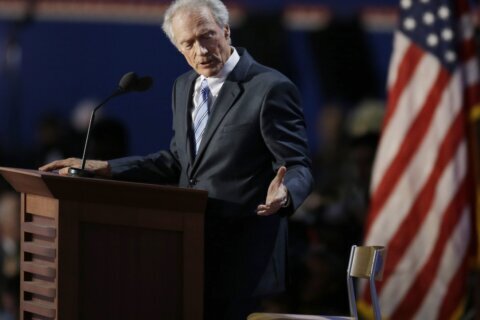The applications of Modern Portfolio Theory and its findings on diversification have led to the proliferation of balanced funds. A common example you’re likely familiar with is the “60/40” portfolio, which consists of 60% stocks and 40% bonds.
“A balanced fund is a diversified investment fund that provides a combination of growth and income by investing across a mix of stocks, bonds and other securities,” says Michael Ashley Schulman, partner and chief investment officer at Running Point Capital Advisors. “It balances the potential for higher returns and higher volatility associated with stocks with the relative stability and income potential of bonds.”
How does this work? It all comes down to correlation or, more precisely, a lack of it. Stocks and bonds tend to have a low correlation due to their different economic sensitivities and structural characteristics. When one zigs, the other tends to zag. This helps to smooth out overall portfolio returns when one asset class underperforms while the other outperforms.
[Sign up for stock news with our Invested newsletter.]
For example, during a recession, stocks often underperform due to reduced corporate earnings. In contrast, bonds may perform well as investors seek safety and central banks cut interest rates to stimulate the economy. Conversely, during an economic expansion, stocks typically perform well due to higher earnings growth, while bonds may lag as interest rates rise to curb inflation.
Bonds also generally offer predictable cash flows and are primarily affected by credit risk and interest rate changes. Stocks, on the other hand, are influenced by market risk and the equity premium, which is the extra return investors demand for taking on the higher risk of owning equities.
While this strategy faltered in years like 2022, where the 60/40 portfolio fell by 16% due to rapidly rising interest rates and soaring inflation, Vanguard notes that this is an anomaly. Historically, in the 10 years through 2022, a globally diversified 60/40 portfolio still returned an annualized 6.1%.
But investors aren’t just restricted to the 60/40 strategy when picking a balanced fund. “There are different types of balanced funds tailored to various investment objectives and risk tolerances,” Schulman explains. “For example, conservative balanced funds emphasize capital preservation and income, while aggressive balanced funds prioritize capital growth over a longer time horizon.”
Here are seven of the best balanced mutual funds and exchange-traded funds (ETFs) to pick in 2024:
| Fund | Expense ratio |
| Vanguard Balanced Index Fund Admiral Shares (ticker: VBIAX) | 0.07% |
| Vanguard LifeStrategy Moderate Growth Fund (VSMGX) | 0.13% |
| Vanguard Wellesley Income Fund Investor Shares (VWINX) | 0.23% |
| iShares Core Growth Allocation ETF (AOR) | 0.15% |
| iShares Core Aggressive Allocation ETF (AOA) | 0.15% |
| T. Rowe Price Capital Appreciation I Class (TRAIX) | 0.59% |
| iShares LifePath Target Date 2050 ETF (ITDF) | 0.11% |
Vanguard Balanced Index Fund Admiral Shares (VBIAX)
“VBIAX is a way to gain exposure to both stocks and bonds as it tracks two indexes that represent broad barometers for the U.S. equity and taxable-bond markets,” says Lauren Wybar, senior wealth advisor at Vanguard. “This fund can be a good option for investors who have a long time horizon, can withstand some market fluctuations, and are looking for growth and some income potential in their portfolio.”
VBIAX’s strategy is simple. The fund starts with an allocation of 60% in U.S. stocks tracking the CRSP U.S. Total Market Index, and 40% in U.S. bonds tracking the Bloomberg U.S. Aggregate Float Adjusted Index. By adopting a passive indexing strategy, VBIAX keeps its expense ratio low, at 0.07%. However, investors should note that as an Admiral Shares class fund, VBIAX requires a $3,000 minimum investment.
Vanguard LifeStrategy Moderate Growth Fund (VSMGX)
“When choosing a balanced fund, be sure to examine your goals, risk tolerance and time horizon, and choose one that is all-encompassing, which includes international exposure,” Wybar says. “Investors can hold hundreds of bonds and stocks in a single balanced fund, allowing you to have more diversification than if you purchased individual securities.” For this purpose, consider VSMGX.
Despite its name suggesting “moderate growth,” VSMGX is actually a balanced fund, as it follows the traditional 60/40 strategy. However, unlike VBIAX, VSMGX also includes an allocation to international stocks and bonds for greater diversification. It is nearly twice as expensive as VBIAX, with a 0.13% expense ratio, but is still reasonable overall. Keep in mind it also requires a $3,000 minimum investment.
Vanguard Wellesley Income Fund Investor Shares (VWINX)
“Income-focused balanced funds prioritize generating consistent cash flows for investors who need regular income,” Schulman notes. “They maintain a higher exposure to income-producing assets like bonds, dividend stocks and other yield-oriented investments to deliver steady income distributions.” A popular and long-standing example from Vanguard is VWINX, which pays a 4.2% 30-day SEC yield.
Unlike the previous funds, VWINX is actively managed and does not track an index. It begins by allocating one-third of its holdings to a concentrated portfolio of fewer than 100 stocks, selected for above-average dividend yield and growth with low valuations. The remaining two-thirds are allocated to investment-grade bonds averaging an intermediate duration. VWINX charges a 0.23% expense ratio.
iShares Core Growth Allocation ETF (AOR)
Not all balanced funds are mutual funds. Some are ETFs, which can be purchased for the price of a single share like a regular stock in a brokerage account. “The convenience of balanced ETFs lies in their ability to be bought and sold on stock exchanges throughout the trading day, which provides better liquidity and ease of access for investors,” says Sean August, CEO at the August Wealth Management Group.
iShares currently offers a wide range of “allocation” ETFs, which all offer different proportions of global stocks and bonds mixed together. The allocation ETF corresponding to a 60/40 strategy is AOR, which tracks the S&P Target Risk Growth Index. It uses a “fund of funds” structure to wrap seven other iShares ETFs plus a money market fund. AOR charges a 0.15% expense ratio.
iShares Core Aggressive Allocation ETF (AOA)
“Balanced funds provide investors with a diversified investment strategy by incorporating a combination of stocks and bonds in varying allocations along a continuum, such as 40/60, 50/50, 60/40 or 70/30,” August says. “When selecting balanced funds and their desired allocation, investors typically consider factors like their risk tolerance, investment objectives and time horizon.”
Long-term investors looking for greater expected returns at the cost of higher risk may like AOA. This fund allocates 80% of its holdings to global equities while reserving 20% for global bonds, making it more aggressive and growth-oriented compared to the usual 60/40 balanced fund. As with AOR, it uses the “fund of funds” structure and charges an identical 0.15% expense ratio.
T. Rowe Price Capital Appreciation I Class (TRAIX)
“TRAIX is highly regarded in the industry, earning a prestigious five-star rating from Morningstar, which signifies its superior risk-adjusted performance compared to peers,” August notes. “This fund combines growth and income strategies, providing a blend of equities, fixed-income securities, and cash equivalents to achieve long-term capital appreciation and income generation.”
TRAIX’s 60% equity allocation features the usual U.S.-heavy stock allocation but is actively managed as opposed to replicating a benchmark. On the bond side, the fund is able to target mortgage and asset-backed bonds and also bank loans in addition to the usual investment-grade corporate bonds and government Treasurys. Investors can expect a 0.59% net expense ratio.
iShares LifePath Target Date 2050 ETF (ITDF)
“Target-date balanced funds adjust their asset allocation based on a retirement date,” Schulman says. “They start with a long-term and higher-growth-oriented allocation to equities, and gradually reduce that exposure while increasing their debt and short-term allocation as the target date approaches, aiming for more stability as the investor nears their target date.”
While investors usually associate target-date funds with mutual funds, they can also be accessed via ETFs like ITDF, intended for investors retiring around 2050. For a 0.11% expense ratio, ITDF wraps eight other iShares ETFs. On the stock side, investors can expect geographical, sector and size diversification. On the bond side, ITDF features both government and corporate issues of various maturities.
[7 Best Funds to Hold in a Roth IRA]
More from U.S. News
7 of the Best 5-Star ETFs to Buy
5 Top Income Investments for the Second Half of 2024
7 Best Balanced Funds to Pick Right Now originally appeared on usnews.com
Update 06/18/24: This story was published at an earlier date and has been updated with new information.







